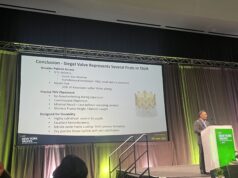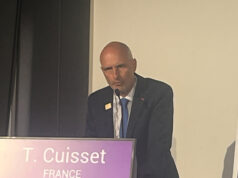
Jonathan Afilalo (Division of Cardiology, Jewish General Hospital, McGill University, Montreal, Canada) and others report in the Journal of American College of Cardiology that the Essential Frailty Toolset (EFT) outperforms other scales when assessing frailty in patients with aortic stenosis, adding that the toolset is, therefore, “recommended” for this setting.
The authors say that US guidelines “strongly recommend” an objective assessment of frailty when selecting patients to undergo surgery or transcatheter aortic valve implantation (TAVI), but note that the guidelines also caution “that the lack of a clear and agreed-up assessment [for frailty] is a barrier” to using frailty when evaluating patients. Commenting that there “has yet to be” a head-to –head comparison of the available frailty scales, Afilalo et al compared the incremental predictive value of seven frailty scales in a prospective multicentre cohort of older adults undergoing TAVI or surgery. “Our overarching goal was to harmonise practice by providing clearer recommendations on how to best assess frailty, which would in turn be used to individualise care and improve outcomes in vulnerable patients,” they write. Seven scales were reviewed: the Fried scale (five items); the Fried+ scale (seven items); Rockwood Clinical Frailty Scale (semiquantitative evaluation); the Short Physical Performance Battery (physical performance tests); the Bern scale (six items), the Columbia scale (four items); and the EFT (four items, with a composite score of five).
In the 1,020 patients in overall cohort, 646 underwent TAVI and 374 underwent surgery. In a multivariate analysis, the EFT demonstrated the strongest association with one-year mortality and contributed the greatest incremental value when added to a model containing the Society of Thoracic Surgeons Predicted Risk of Mortality (STS-PROM) and procedure type. Afilalo et al report: “Specifically, when the EFT was added, the C-statistic improved by 0.071.” Furthermore, they add, the EFT was found to be the best score to predict “therapeutic futility”—eight of 10 patients with scores of 5 of 5 experienced fatal or disabling outcomes. “Likewise, the majority of patients with a Rockwood Clinical Frailty Scale score of ≥7 of 9 experienced fatal or disabling outcomes; no other frailty scale or trait was consistently predictive of futility,” the authors observe.
Afilalo et al state that the EFT scale has advantages “beyond its predictive valve”, saying that “it is quick to perform, it does not require specialised equipment and, importantly, its components have higher interobserver reliability and are actionable”. In detail, the score reviews patients’ ability to stand five times from a seated position without using arms, their cognition function, haemoglobin level, and serum albumin level.
Concluding their study, the authors acknowledge that the score is “not all encompassing” but say that “it is a well-rooted starting point to test for frailty” and “to identify patients in whom further geriatric assessment should be considered” to confirm any conditions suggested by the scale (such as dementia). They add: “Frailty is a major risk factor for death and disability following TAVI and surgery. In particular, the EFT adds incremental predictive value to identify vulnerable older adults and is recommended for use in this setting.”










